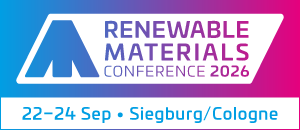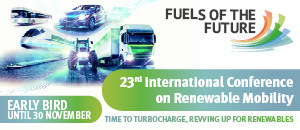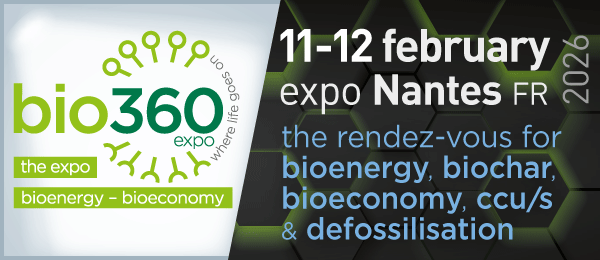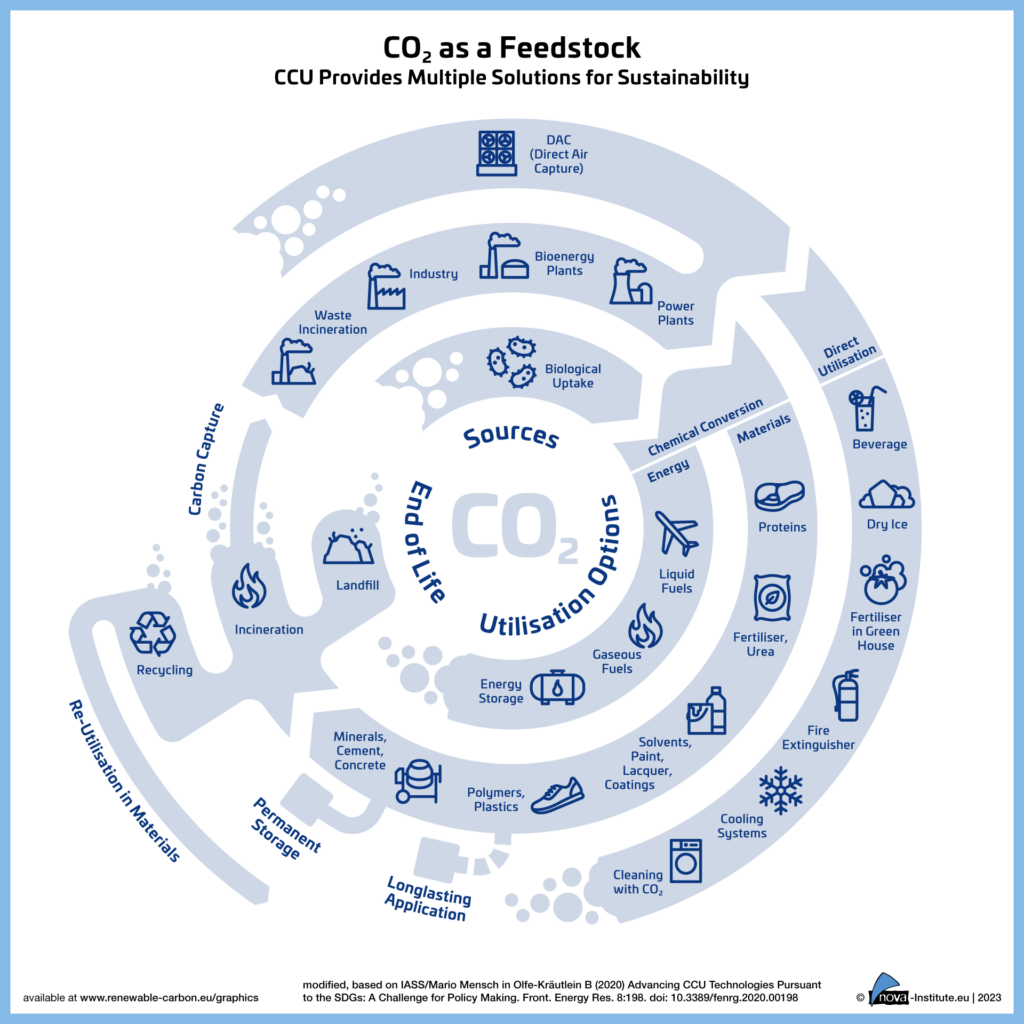
To drive the successful implementation of Carbon Capture and Utilisation (CCU), industry requires long-term and secure CO2-supply. CO2 can be sourced from various means, including direct capture from air and oceans, persistent biogenic CO2 sources, and efficient industrial point sources utilising advanced carbon capture technologies. The sector is rapidly expanding, as evidenced by more than 70 companies globally engaging in CO2 capture initiatives. In the European Union, this momentum is further amplified by 110 EU-funded projects dedicated to advancing carbon capture technologies. This growing ecosystem of innovation and investment underscores the increasing importance and viability of CCU as a key strategy in the transition to a circular carbon economy.
Among these diverse CO2 sources, biogenic CO2 presents a particularly promising avenue for sustainable carbon capture. With its roots in the natural carbon cycle, biogenic CO2 offers unique advantages in terms of environmental impact and potential for achieving negative emissions. Specific characteristics and sources of biogenic CO2 make it a crucial component in the CCU landscape.
Biogenic CO2 Sources
The term “biogenic CO2” refers to any CO2 derived from biomass or bio-based products. In the context of CCU, biogenic CO2 must be the waste product of an industry whose main product results from transforming biomass to CO2. Biogenic CO2 streams may be almost fully or partially biogenic and can also include fossil CO2 to some extent. Industries supplying biogenic CO2 include bioethanol plants, biogas plants, biomass and bioenergy plants, biorefineries, food, feed and beverage production, pulp, paper and board, wood and forestry products and waste incineration plants. Each year, over 130 million tonnes of biogenic CO2 are emitted in Europe. The pulp, paper and board, wood and forest products industries account for the largest share of these emissions, exceeding 60%, followed by biomass and bioenergy, food, feed and beverage production, and bioethanol plants
The costs of carbon capture
Industrial point sources of biogenic CO2 are characterised by relatively high CO2 concentrations, ranging from 7 to 99% CO2. This is significantly higher than the concentrations found for direct air capture (0.04%) or direct ocean capture (4%). Generally, the cost of CO2 capture are influenced by two key factors: the concentration of CO2 and the amount and type of impurities. Higher CO2 concentration and fewer impurities result in lower costs.
The CO2 capture process can be divided into two main aspects: capture methods and capture technologies. Capture methods are defined based on how CO2 is generated and captured. These include Direct Air Capture, Direct Ocean Capture, Post-Combustion Capture, Pre-Combustion Capture, and Oxyfuel Combustion Capture. Capture technologies, on the other hand, can be used for different capture methods. The selection and efficiency of the CO2 capture technology depend primarily on the CO2 concentration, the concentration of impurities (such as nitrogen or dust) and the flue gas pressure. In most cases, a combination of two or more capture technologies is used to achieve the highest possible capture efficiency. These technologies include chemical absorption, physical absorption, adsorption, membrane separation, enzyme-based separation, cryogenic fractionation, hydrate-based separation, and electrochemical methods such as electro-deionization, electrodialysis, and electrochemical pH swing systems, specifically for Direct Ocean Capture.
Carbon capture technologies
The various capture technologies encompass a range of specific techniques. For instance, the chemical absorption group includes six different technologies, such as amine scrubbing, ammonia scrubbing, use of amino acid salts, calcium oxide or alkali carbonate scrubbing. Among these, amine scrubbing stands out as the longest- established and most-widely used technology, capable of capturing 1,000-2,000 tonnes of CO2per day.
In conclusion, it is not feasible to make a generalised statement about which CO2 source and capture technology is more profitable and efficient from either a technical or economic perspective. This is because both technical implementation and economic efficiency are contingent upon several specific factors, CO2concentration and amount of impurities.
Firstly, the CO2 concentration and the amount of impurities play a crucial role. Secondly, specific plant conditions significantly influence the process, including factors such as flue gas temperature and pressure, water required for cooling, the size of the capture plant, heat integration, and the quantity of captured emissions. Lastly, the intended subsequent use of the captured CO2 must be taken into account, as this can affect the choice of capture method and technology.
CO2-Based Fuels and Chemicals Conference 2025
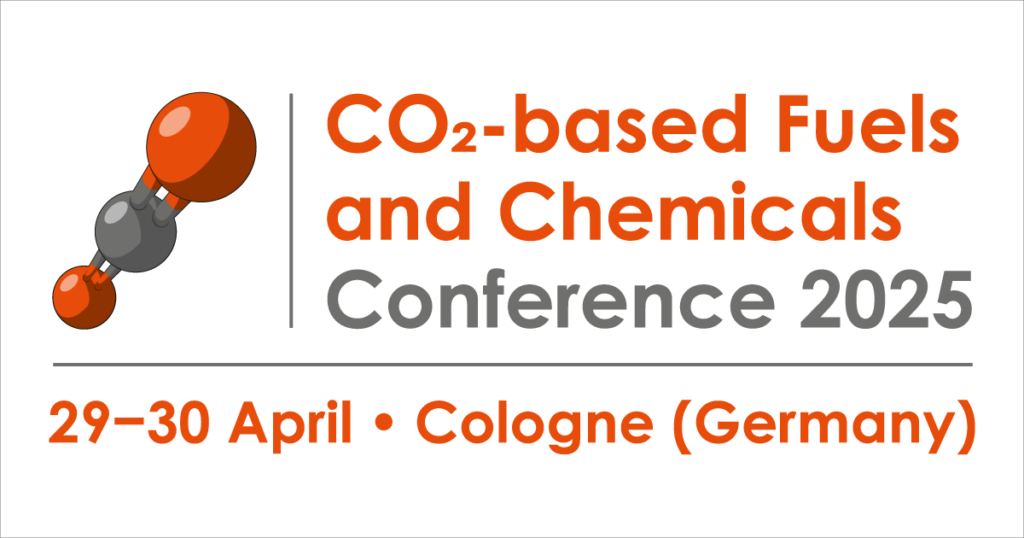
The CO2-based Fuels and Chemicals Conference 2025 will address this topic with several international speakers focusing on the use of biogenic CO2 sources and carbon capture technologies. The companies Endrava, EIT InnoEnergy, Fortum and Revcoo will present software-based evaluation of biogenic CO2sources, their potential for CCU demonstrated in case studies, as well as cryogenic and mobile carbon capture solutions.
Speakers include:
- Eric Rambech (Endrava) – Sourcing Biogenic CO₂ – Opportunities and Challenges
- Joao Oliviera (EIT InnoEnergy) – CarbFlex
- Jarkko Toropainen (Fortum) – Harnessing the Power of the Nordics: Fortum’s Unique Position for Boosting Electrification and Use of Sustainable Carbon Sources
- Juliette Poupeney (Revcoo) – CarbonCloud: The Revcoo Solution
For more information and registration visit https://co2-chemistry.eu/.
Source
nova-Institute, original text, 2025-04-08.
Supplier
CaptureMap Endrava
EIT InnoEnergy
European Union
Fortum Corporation
nova-Institut GmbH
Revcoo
Share
Renewable Carbon News – Daily Newsletter
Subscribe to our daily email newsletter – the world's leading newsletter on renewable materials and chemicals









